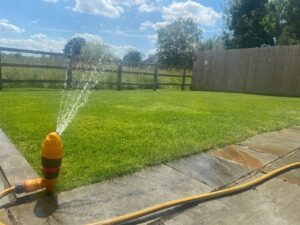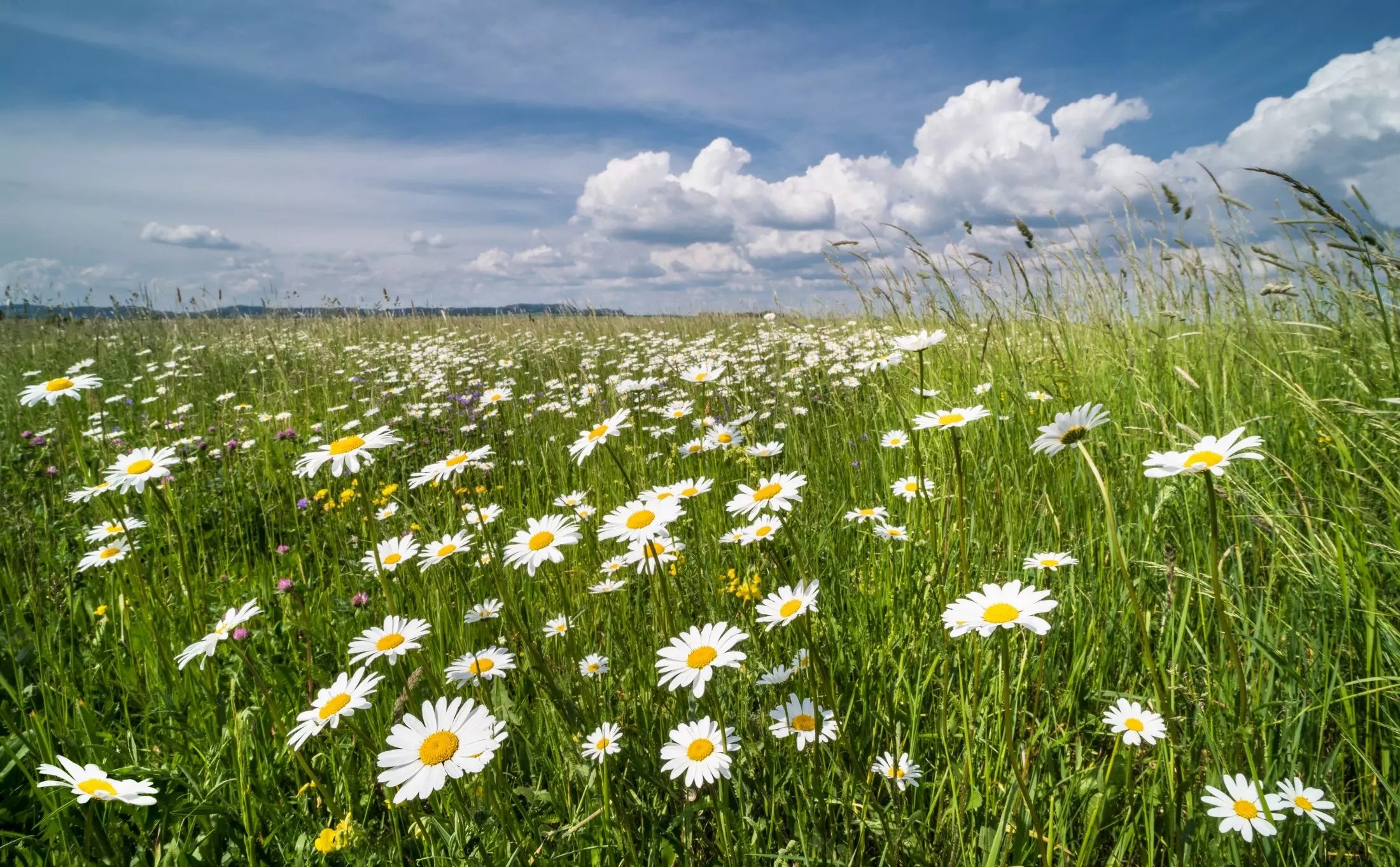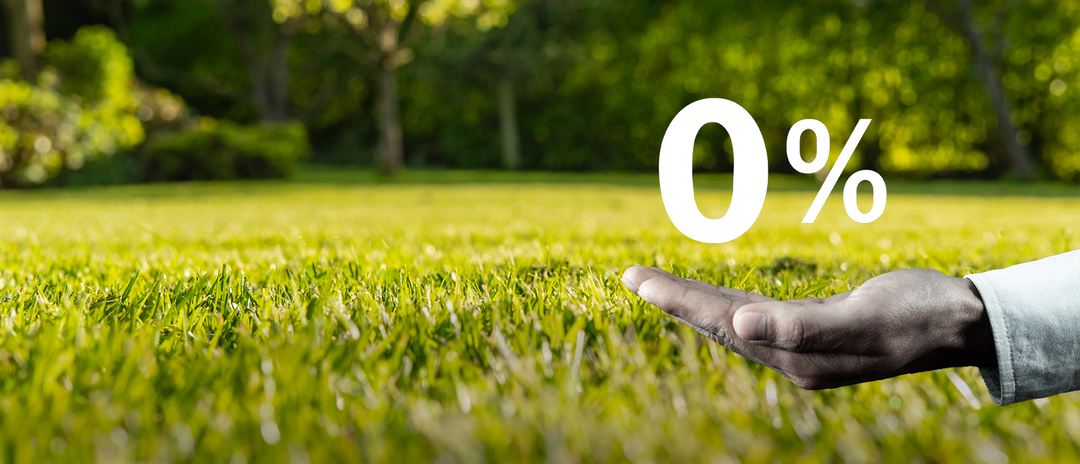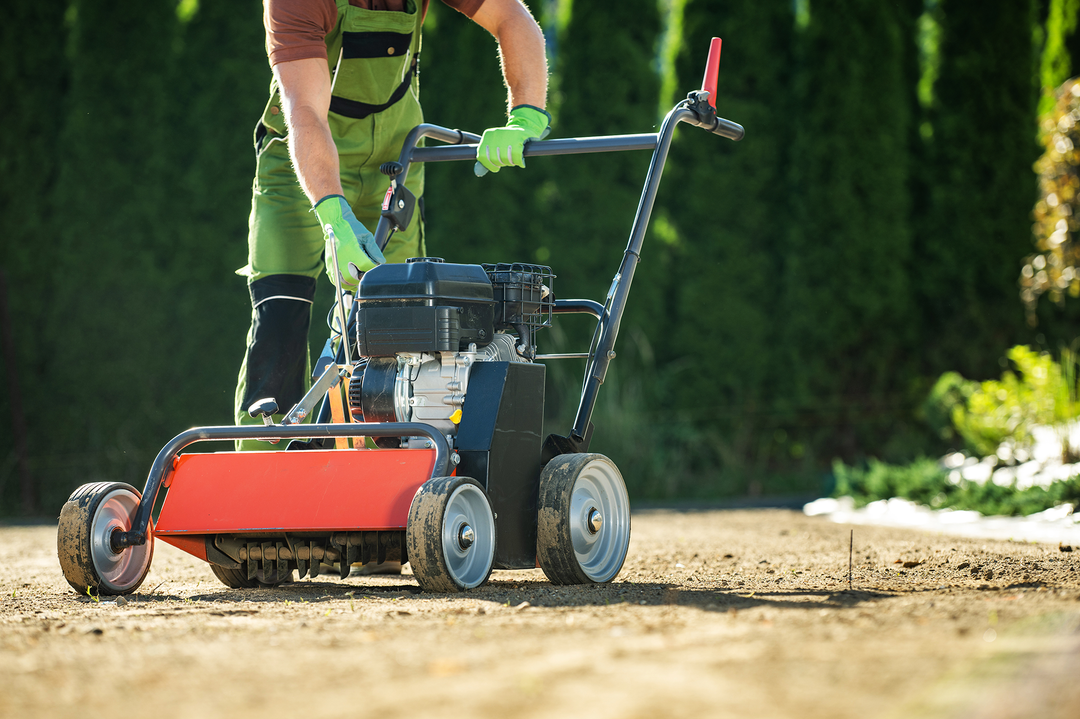Did you know that your lawn's health and verdancy are largely dependent on how you wield your garden hose? The unassuming act of watering can make the difference between a lush green and a barren brown patch outside your window. Establishing a proper watering routine is not just about the amount of water used; it involves understanding the unique needs of your grass and the delicate balance of factors that contribute to a healthy lawn.
From the type of soil cradling the roots to the time of day when the sun kisses the blades, every element plays a crucial role in proper lawn hydration. Insufficient watering can lead to a weakened lawn, vulnerable to pests and diseases, while overwatering has its detriments, promoting fungus growth and a shallow root system.
Say goodbye to the guesswork and hello to a healthier lawn with our expert guide on the best practices for watering your lawn. Learn why adequate watering is vital, how to discern your lawn's specific needs, and the most effective techniques to quench its thirst. Prepare to dive deep into the science of soil moisture, discover the optimal time for watering, and tailor your maintenance routine for the particular type of grass waving in your garden.
Always remember that in the summer there might be hosepipe bans put in place. The following link will give a list of any active hosepipe bans.
Why is Proper Watering Important for Your Lawn?
Watering your lawn is a task that should not be taken lightly, as it directly affects the health and vitality of your grass. Proper watering ensures that your soil remains moist, allowing grass seeds and established lawns to receive the necessary hydration for optimal growth. It's crucial to strike a balance; while the lawn needs around 1 inch of water per week in the height of summer, overwatering can be just as detrimental as under-watering.
By watering deeply and infrequently, you encourage the roots of your grass to grow deeper into the soil, which enhances the lawn's resilience during dry spells and improves its overall drought tolerance. Conversely, inadequate watering practices can leave grass susceptible to pests, diseases, and the consequences of a shallow root system. Establishing a proper watering schedule, considering factors like the time of day and soil type, can result in a lush and robust lawn that's better equipped to handle the variances of climate and the rigors of use.
Effects of Insufficient Watering on Your Lawn
A lawn starved of adequate moisture can quickly show signs of distress. Without regular watering, the grass can become vulnerable to damage from pests, disease, and environmental stressors. Grass that's watered daily may seem like a beneficial regimen, but this habit actually encourages the development of shallow roots – the result can be a weakened lawn that's quick to dry out and struggle under the sun's intense heat.
To sustain a robust lawn, watering about three times per week during the warmer months might be necessary, depending on your lawn's needs and the local weather conditions. This typically provides about an inch of water each week. However, overdoing it can prompt fungus growth and soil compaction, hampering healthy grass development. On the other end of the spectrum, insufficient watering leads to drought stress, characterized by dry and cracked soil and grass that is brittle and unable to reach deeper moisture. By ensuring that water penetrates deep into the inch or so of soil, you're empowering the roots to stretch further down, creating a more resilient lawn overall.
Understanding Your Lawn's Watering Needs
Grasping the specific hydration requirements of your lawn is fundamental to nurturing a thriving green space. A healthy lawn demands approximately 1 to 1.5 inches of water weekly, whether it be through natural rainfall or manual irrigation. The rhythm of your watering routine is not static; it wavers with the seasons. Blistering, dry conditions could compel you to water more often, whereas a drop in temperatures signals a need to scale back to prevent overwatering.
Vigilance for telltale signs can keep your lawn in peak condition. The resilience of your grass, for instance, can be measured by its ability to spring back after being stepped on—footprints that linger are a call for hydration. Instruments like rain gauges and moisture meters come in handy, transforming the art of lawn care into a precise science. These tools measure moisture levels, enabling you to ensure the lawn is quenched just right, avoiding the pitfalls of over or under-watering. Remember, of all the elements of lawn care, effective watering has the most immense impact—a responsibility that should be managed with understanding and attention.
Factors to Consider for Determining Watering Needs
When considering your lawn's watering regimen, a one-size-fits-all approach falls flat. Numerous elements influence the thirst of your turf. The composition of your soil, type of grass, exposure to sun and wind, and fertilization levels all play pivotal roles. Observing your lawn's color shift to a drab hue or noticing footprints that seem to etch into the blade are nature's calls for a drink.
Watering should be a deep root affair—surface sips lead to shallow roots, while a good soak fosters a strong foundation beneath. An adeptly fertilized lawn can bear the brunt of a parched period more resiliently, thus affecting the frequency needed for watering. Tools such as rain gauges and moisture meters are allies in your quest to maintain the fine balance between too much and too little, preventing waste and safeguarding against grass trauma.
Soil Type and Its Impact on Water Retention
The substrate your lawn calls home is a determining factor in water management. If your turf is bedded in sandy terrain, brace yourself for more frequent watering episodes—it's a thirsty soil that lets moisture slip easily through its gritty fingers. Contrastingly, clay-heavy soil grasps water with a vice-like grip, raising the risk of the roots taking a prolonged soak which can lead to distress and disease.
Balanced soil, such as loam, is the yardstick for harmony in hydration—offering sufficient drainage yet preserving moisture to foster healthy root development. Appreciating the particular drain-and-retain characteristics of your soil type fortifies your ability to construct a watering schedule that catresses the unique needs of your grass, ensuring its vigor and verdure.
Best Time to Water Your Lawn
Understanding when to water your lawn can have a significant influence on maintaining its lush, green appearance and ensuring the health of its grass roots. To achieve the balance between efficient water use and a healthy lawn, the timing of watering is crucial.
The Ideal Time of Day to Water Your Lawn
To optimize your lawn care routine, the consensus among experts is to water your grass in the early morning, ideally between 6 a.m. and 10 a.m. This time frame strikes the perfect balance by allowing water to soak deeply into the soil, reaching the grass roots without the risk of excess evaporation from the midday sun. In addition, watering early allows grass blades enough time to dry before the evening, reducing the likelihood of fungal diseases which can thrive in moist, cool conditions overnight.
Avoiding Watering During the Hottest Hours
During the sweltering heat of a summer day, usually between 10 a.m. and 4 p.m., watering becomes less effective and eco-friendly. The sun's intensity at this time causes water to evaporate too quickly from the soil surface before it can be utilized by grass roots. Additionally, water droplets on grass blades act like magnifying glasses, potentially scorching your grass during peak sunlight hours. Hence, evading this time frame is both a conservation effort and a protective measure for your lawn's vitality.
Watering Your Lawn in the Evening: Pros and Cons
Although evening watering, specifically between 10 p.m. and 6 a.m., might seem like a clever way to conserve water and adhere to water restrictions, it comes with a downside. Nighttime temperatures drop, slowing the rate of evaporation. Consequently, water can linger on grass blades and soil, creating a conducive environment for fungal growth and lawn diseases. While it may seem beneficial to have the lawn absorb water overnight, the extended moisture can invite pests and lead to the development of unhealthy lawn conditions. The cons of evening watering often outweigh the pros, making it a less than ideal choice in most situations.
In summary, morning watering is most conducive to a thriving lawn. It aligns with the grass's natural growth cycle, prevents wasteful evaporation, and limits the risk of disease. Always consider your local climate, soil type, and the type of grass you're nurturing when creating your watering schedule. And during periods of extreme heat or unexpected dry spells, adjust your watering accordingly to ensure your lawn stays as resilient and green as possible.
Proper Watering Techniques for a Healthy Lawn
To cultivate a verdant, healthy lawn, mastering the proper watering techniques is essential. Providing your grass with 1 inch of water weekly is the key metric for hydration in the midle of summer—a balance that fosters deep root growth and ensures a robust green lawn. The ideal method for watering extensive lawn areas is using sprinklers that simulate a slow, soaking rain, granting water enough time to penetrate deeply into the soil without causing runoff. Overzealous watering should be avoided, as it can instigate shallow roots, promote diseases, and create a welcoming haven for pests. Adhering to these guidelines helps maintain an effervescent lawn without wasting water.
[caption id="attachment_18945" align="alignnone" width="389"] Using a lawn sprinkler will help to get an even applcation of water over the lawn.[/caption]
Using a lawn sprinkler will help to get an even applcation of water over the lawn.[/caption]
Determine the Inches of Water Your Lawn Receives
To ensure your lawn is quenched with the correct amount of water, performing the screwdriver test is a practical method. Dive a screwdriver 6 to 7 inches deep into the turf. If it slides in easily, the roots are sufficiently hydrated. Additionally, you can employ rain gauges or empty containers to gauge your sprinkler's water output—midway sprinkler spray area yields the most accuracy. Monitor your lawn's response to watering, using a screwdriver to decipher the need for adjustments. Remember, symptoms of overwatering, such as yellowing grass and weed proliferation, may call for a reduction in watering frequency or duration.
Watering Frequency and Amount
The frequency and amount of watering your lawn requires are contingent upon various factors, including soil type, climate, and grass species. Over-watering promotes shallow root development and can render your lawn more susceptible to a plethora of maladies. Conversely, infrequent hydration may lead to dormancy or even grass death. Ideally, you should water deeply yet sparingly to foster a hardy, drought-resistant turf. Shallow, frequent watering is inefficient and costly. The aim is to find that sweet spot where your lawn stays hydrated without wasteful overindulgence in water.
Utilizing Rain Gauges to Monitor Rainfall and Adjusting Watering Schedule
Rain gauges serve as an invaluable tool for lawn maintenance, aiding in preventing over-watering by measuring the precipitation received. By simply placing a gauge within a sprinkler’s range, you can accurately quantify the water your lawn absorbs during irrigation. This measurement, alongside natural rainfall captured by the gauge, informs you of the need to adjust your watering regimen. It's about striking the proper balance to maintain a flourishing lawn, using tools like rain gauges or even repurposed tuna cans to measure sprinkler output.
Watering Deeply to Promote Root Growth
Deep watering is indispensable for a healthy lawn—approximately 25 to 30 minutes of watering once or twice a week is generally sufficient. This practice nurtures deep-rooted grass, resilient against fluctuating environmental stressors. Avoid shallow watering, which can result in frail, surface-level roots prone to damage from heat, cold, and pests. Utilize collection methods, such as a timed reservoir, to ensure you're reaching the recommended inch of water during each deep watering session.
Preventing Wasteful Evaporation through Watering Techniques
To evade needless evaporation, time your watering for the cool, early morning hours between 6 a.m. and 10 a.m. At this time, the cooler temperatures aid in water retention and decrease the chances of heat stress and disease afflicting your lawn. While watering overnight from 10 p.m. to 6 a.m. might suit water conservation efforts, avoid peak sunlight hours from midday to afternoon, as this can exacerbate grass stress and impede water absorption. Seasonally adjust your watering schedules, providing deeper, less frequent watering sessions to conserve and effectively manage our precious water resources.
Caring for Specific Grass Types
When it comes to achieving the coveted lush and vibrant lawn, understanding the particular needs of your grass type is critical. Cool-season grasses, like reygrass and fescue, thrive in climates with cold winters and mild summers. They typically require generous watering to maintain their color and vigor, especially as they can demand more hydration compared to their warm-season counterparts such as bermuda and zoysia. These warm-season varieties, conversely, perform best when the temperature soars above 80 degrees and generally manage to retain moisture more efficiently. This is the reason why they are used in southern Europe and
The fine texture of sandy soils, often located near water bodies such as rivers or the coast, presents a distinct challenge for grasses planted within. Such soils drain quickly and retain less moisture, necessitating frequent, lighter sessions of watering to keep the grass hydrated without over-saturating the turf. It is important to remain vigilant about the specific watering needs of your lawn, taking into account the combination of grass type, climate, and soil type to ensure your watering regimen promotes a thriving, healthy lawn without wasting this valuable resource.
Watering Tips for Cool-Season Grasses
Cool-season grasses like Kentucky bluegrass and fescue demand close attention to watering schedules. During the sweltering periods of late spring, the entirety of summer, and the onset of the fall season, these types of grass may require up to three waterings per week to retain their lush appearance and health. When the autumnal chill sets in, it is crucial for such grasses to receive adequate moisture to recover from any summer-related dormancy and prepare for the colder months ahead.
To flourish, cool-season grasses should receive 1 to 2 inches of water per week during hot spells. As the temperatures cool and the growing season nears its end, maintain a watering regimen that provides approximately an inch to an inch and a half of water weekly. During the peak summer months, alternating watering days—such as every other day—can help sustain the grass's health and support a continuous dense, green coverage.
Grass Seed Selection and Watering Considerations
Selecting the right grass seed is a cornerstone of lawn care, with the watering needs closely tied to your choice. A healthy, green lawn requires about 1 to 2 inches of water per week, yet vigilance must be maintained to avoid the perils of overwatering, which could drown roots and foster fungal diseases. Equally, under-watering can weaken your turf and make it vulnerable to environmental stresses.
The prime time for watering grass is in the early morning hours, specifically between 6 a.m. and 10 a.m., to ensure peak water absorption and minimal evaporation. While hand watering can seem sufficient, it often leads to inconsistent distribution and may promote pooling or runoff. Instead, opt for sprinklers that deliver water akin to a gentle rain, evenly soaking the lawn for the best possible penetration and results.
In lawn care, knowledge and precision go hand in hand. By understanding your grass's specific needs and how to effectively meet them, you pave the way for a flourishing lawn that's as resilient as it is beautiful. The most drought tolerant grass specie is Tall Fescue, this grass is a 'must have' species if you want to keep a green lawn with minimal watering. Tall Fescue is used in our Drought Resistaint Grass Seed Mixture.
Maintaining Adequate Soil Moisture
Achieving proper hydration for your lawn is about striking a balance; it's essential to provide enough water for sufficient soil moisture without overdoing it. The porous nature of sandy soil means that water can run through too rapidly, often necessitating over an inch of water weekly to maintain adequate moisture levels. Clay soil, conversely, may hold onto water too zealously, potentially resulting in root diseases as grass roots are averse to constant wetness. The loamy soil hits the sweet spot, thanks to its balanced organic matter content – it's adept at retaining necessary moisture while permitting excess to drain away, avoiding the risk of a waterlogged lawn.
When managing your lawn's moisture, it's important to factor in the type of soil beneath your grass. Periodic and effective watering, tailored to the soil type, is better than a fixed schedule. The lawn’s condition serves as an indicator; signs of distress like drying and yellowing indicate the need for more water, while pooling water on the surface suggests you might be watering too much.
The Role of Soil in Water Retention
Healthy soil is a cornerstone for thriving grass, capable of providing excellent drainage while also preserving an optimal level of moisture at the root zone. The texture and composition of soil play a significant role in lawn care, particularly in the domain of watering. Soil types like sandy that quickly drain may command weekly waterings in excess of one inch to sustain lawn hydration. Conversely, clay soil's retention properties can lead to overwatering woes, causing an unfavorable, waterlogged environment for grass roots. Loam is the goldilocks soil type for gardeners, offering a harmonious mixture of drainage and moisture retention, thanks in no small part to its organic compounds.
Being mindful of your soil's unique attributes informs a more cultivated approach to watering. A regimen that complements your soil type is crucial, ensuring your grass is neither thirsty nor drowning, but rather, flourishing with just the right amount of moisture.
Something to remember is that shaded lawns may require more watering if there are tree roots presents becuase the tree roots will be sucking out water.
Preventing Shallow Root Growth through Proper Watering
One common misstep in lawn care is the tendency to over-water, which can lead to shallow root systems, leaving the lawn vulnerable to diseases and less resilient during dry spells. Under-watering carries its hazards too, potentially sending your grass into dormancy or worse, death. The recommended practice for a robust root system and enhanced drought tolerance is to water deeply but infrequently. This encourages roots to grow deeper into the soil in search of moisture, making them more resistant to environmental stress.
Daily watering is a no-go; it fosters shallow rooting, forcing the grass into quick drought-related stress whenever watering is skipped. Instead, implementing deep watering sessions—about an inch of water once or twice a week—encourages a hardier, more drought-tolerant lawn. Coupling this with pre-summer fertilization and nutrient application can provide the additional boost needed for your lawn to thrive, even when watering is sparser during hot, dry conditions.














